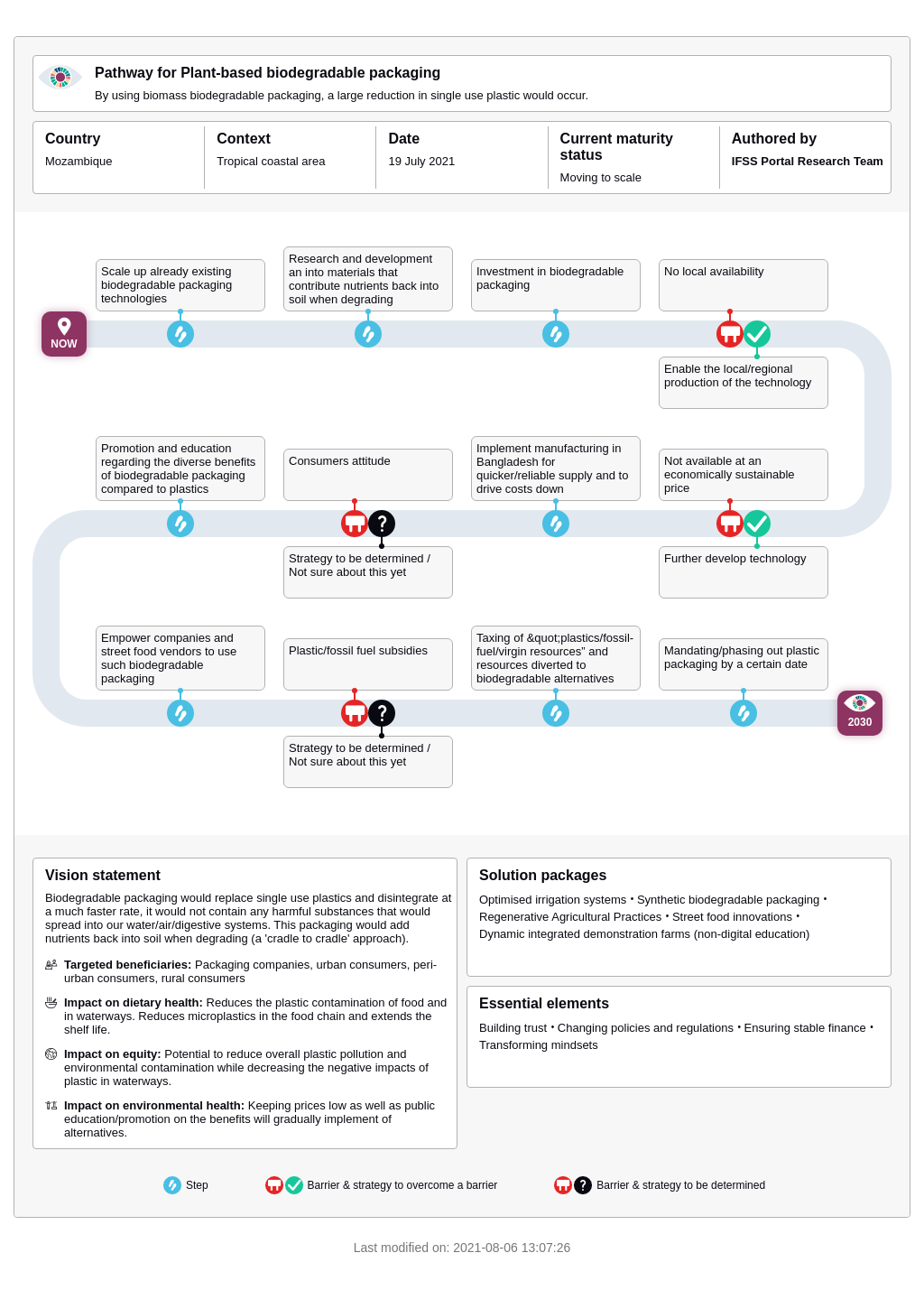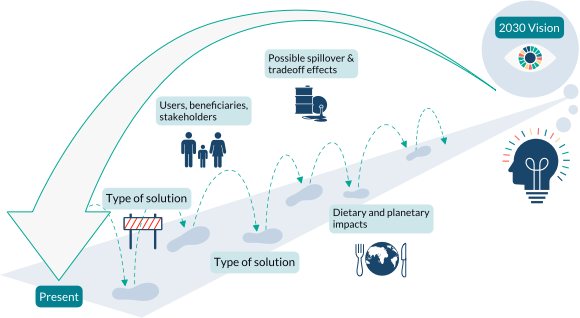
By using biomass biodegradable packaging, a large reduction in single use plastic would occur.
Biodegradable packaging would replace single use plastics and disintegrate at a much faster rate, it would not contain any harmful substances that would spread into our water/air/digestive systems. This packaging would add nutrients back into soil when degrading (a 'cradle to cradle' approach).

